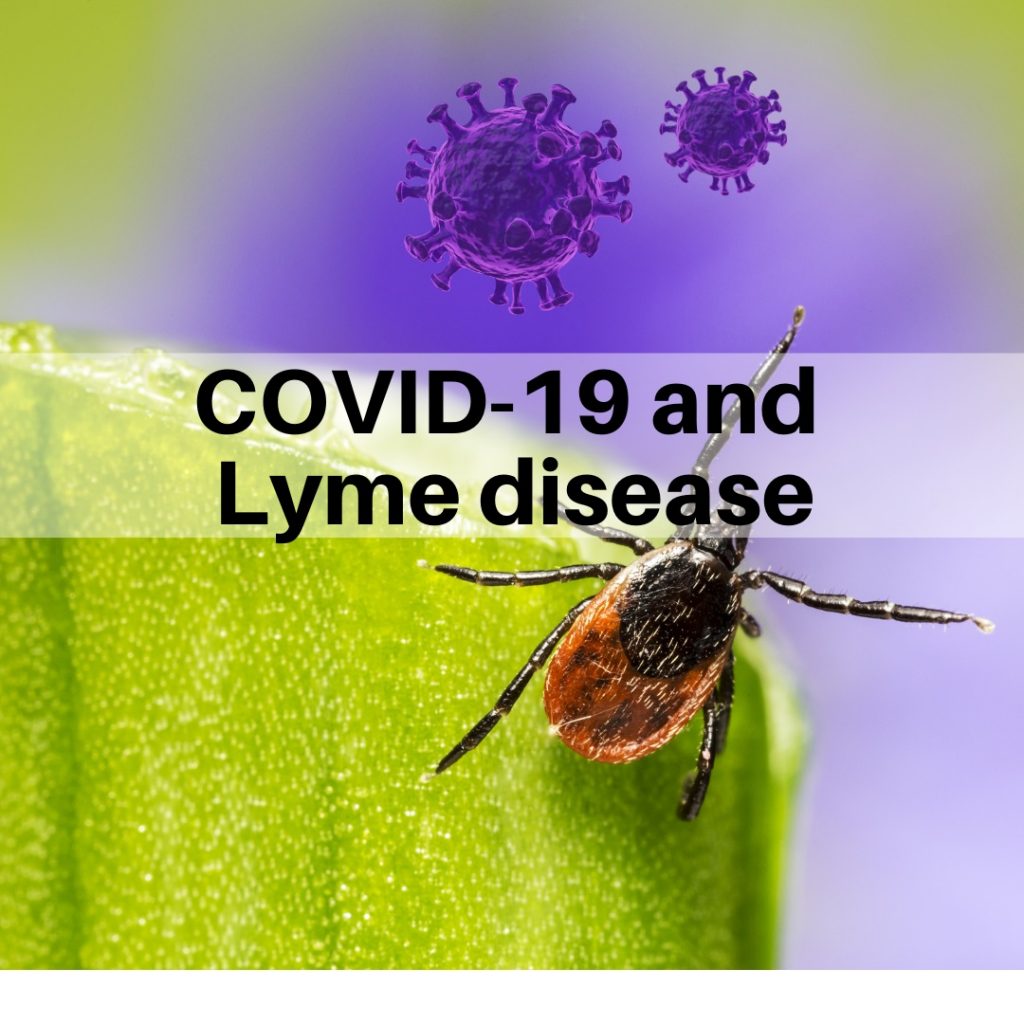Does having Lyme disease increase the risk for severe COVID?

According to the CDC, nearly one in five American adults who have had COVID-19 currently have chronic symptoms. With the U.S. approaching 100 million cases of confirmed COVID-19, that would mean nearly 20 million adults have “long COVID.”
I’ve heard from many Lyme disease patients who say their Lyme symptoms flared after they contracted COVID-19.
The symptoms I hear about most are fatigue, migrating joint pain, difficulty concentrating (brain-fog), fibromyalgia-like muscle pain and sleep disturbance. Several patients I know have been placed back on treatment for Lyme disease and have seen significant improvement in their symptoms.
So what is going on here?
Is it possible some of these patients with long COVID might also be battling an untreated (or under-treated) tick-borne disease like Lyme disease, bartonellosis, anaplasmosis, or babesiosis?
A research paper from Poland suggests this may be true. Researchers say that patients with previous exposure to Borrelia (the bacteria that causes Lyme disease) appear to be at higher risk of severe COVID-19 after exposure to the SARS-CoV-2 virus. (Szewczyk-Dabrowska, et al., 2022.)
As we know from previous Lyme disease studies, co-infection with other pathogens complicates and frequently increases the severity of illness. As it turns out, the same appears to happen with COVID-19.
Pre-existing co-morbidities
Early in the pandemic, it was evident that patients with pre-existing comorbidities, such as heart disease, obesity or diabetes, were at greatest risk for developing severe disease or death.
More recent evidence points to COVID-19 immune deregulation as contributing to the resurfacing of previous infections (latent) such as Epstein-Barr virus (EBV)—the cause of mononucleosis.
The researchers were prompted after a case report describing a Lyme patient whose symptoms improved after aggressive treatment for COVID-19. The Russian woman contracted Lyme disease mid-2019, but did not receive a first round of antibiotics until early 2020—after the infection had disseminated, resulting in “chronic encephalitis.” (Shutikova, 2021)
Shortly thereafter, the woman became infected with SARS-CoV-2. She was given an “anti-COVID-19 treatment” that included an antiviral, an immunosuppressive drug and two types of antibiotics—azithromycin, and ceftriaxone.
Not only did this treatment improve her COVID symptoms, but the combination (likely the antibiotics) also cleared her Lyme disease symptoms.
The paper, entitled “Correlation between COVID-19 and previous exposure to Borrelia spp.” strongly suggests that a history of tick-borne infections contributes to the risks of COVID-19. The mechanisms for this are uncertain, but Borrelia’s ability to shape shift, form persister cells, and cause chaos in the immune system, may contribute to this phenomenon.
19 different markers for Lyme disease
For this study, the researchers used a “multi-antigen Microblot-Array” (a blood test) to screen for 19 different markers (antigens) showing prior exposure to Borrelia burgdorferi.
Included in the study were 31 severely ill (hospitalized) COVID patients, and 28 mild or asymptomatic patients who tested positive for COVID-19. They then compared the severe and mild COVID patients to 28 seronegative COVID individuals as controls. All study participants were from central Europe.
Limits of the study are noted as the test for Lyme disease has limited ability to distinguish between active and prior infection. In general, the researchers compared the markers for both acute (IgM) and prior (IgG) Borrelia burgdorferi exposure.
31 out of 31 patients hospitalized for COVID disease, and 19 (out of 28) patients with mild/asymptomatic COVID were positive for Borrelia burgdorferi specific IgG. From the negative-COVID control group, only 8 (out of 28) were found to have markers for Lyme disease.
The authors state, “For 6 out of 19 Borrelia antigens tested, severe COVID-19 patients demonstrated significantly higher specific IgG serum levels than any other group of patients: VlsE B. garinii, p41 B. burgdorferi sensu stricto, OspB, OspA B. burgdorferi sensu stricto, OspC B. garinii, and OspC B. burgdorferi sensu stricto.”
Many also had markers for anaplasmosis
Incidentally, the severe COVID-19 patients were also found to have significantly higher levels of IgG markers specific to Anaplasma antigens (OmpA and Asp62).
Anaplasmosis, also known as human granulocytic anaplasmosis (HGA), is caused by the Anaplasma phagocytophilum bacterium. Anaplasma is commonly found in small mammals and rodents, and can be transmitted to humans by the bite of the same blacklegged tick that transmits Lyme disease.
The authors consider several possibilities for the evidence linking prior Lyme disease to increased severity of COVID. One possibility they propose is that a delayed diagnosis leading to “prolonged Lyme disease might affect the immune system, decreasing its efficacy in antiviral responses in the viral infection.”
While correlation does not equal causation, this study supports the suggestion that increased risks in COVID-19 are linked to a history of ticks bites and related infections. Screening for antibodies that target Borrelia and other tick-borne infections–and treating appropriately–may improve outcomes and reduce hospitalizations for SARS-CoV-2 infected patients.
LymeSci is written by Lonnie Marcum, a Licensed Physical Therapist and mother of a daughter with Lyme. She has served two terms on a subcommittee of the federal Tick-Borne Disease Working Group. Follow her on Twitter: @LonnieRhea Email her at: lmarcum@lymedisease.org.
Resources
To learn more about how Lyme disease subverts and impairs the immune system watch this accredited continuing medical education course, “Antibiotic efficacy for treatment of Lyme disease,” by Monica Embers, associate professor of microbiology and immunology at Tulane University.
References
Alina Szewczyk-Dabrowska, Wiktoria Budziar, Marek Harhala et al. (2022) Correlation between COVID-19 severity and previous exposure of patients to Borrelia spp., Sci Rep 12, 15944 (2022). https://doi.org/10.1038/s41598-022-20202-x
Shutikova, A. L., Leonova, G. N., Popov, A. F. & Shchelkanov, M. Yu. (2021) Clinical and diagnostic manifestations of tickborne mixed infection in combination with COVID-19. Russian Clinical Laboratory Diagnostics 66, 689–694




















We invite you to comment on our Facebook page.
Visit LymeDisease.org Facebook Page